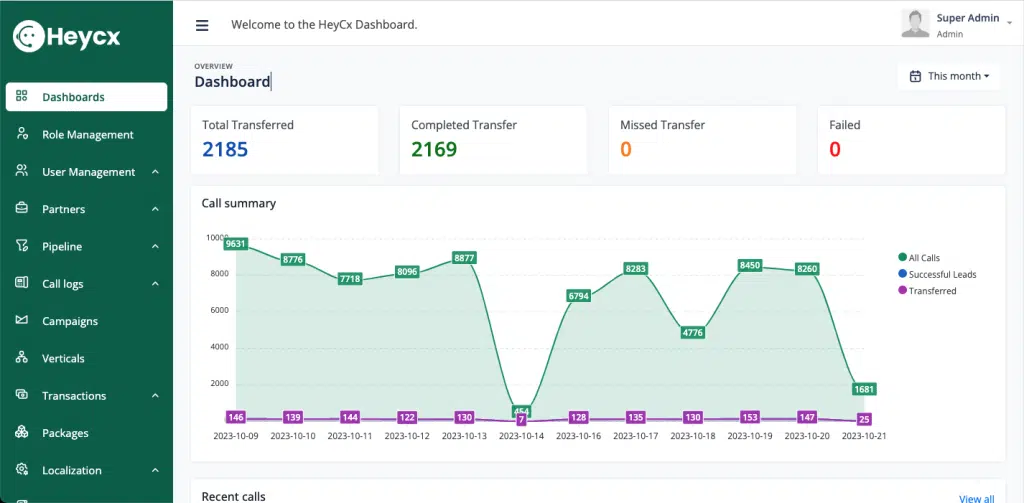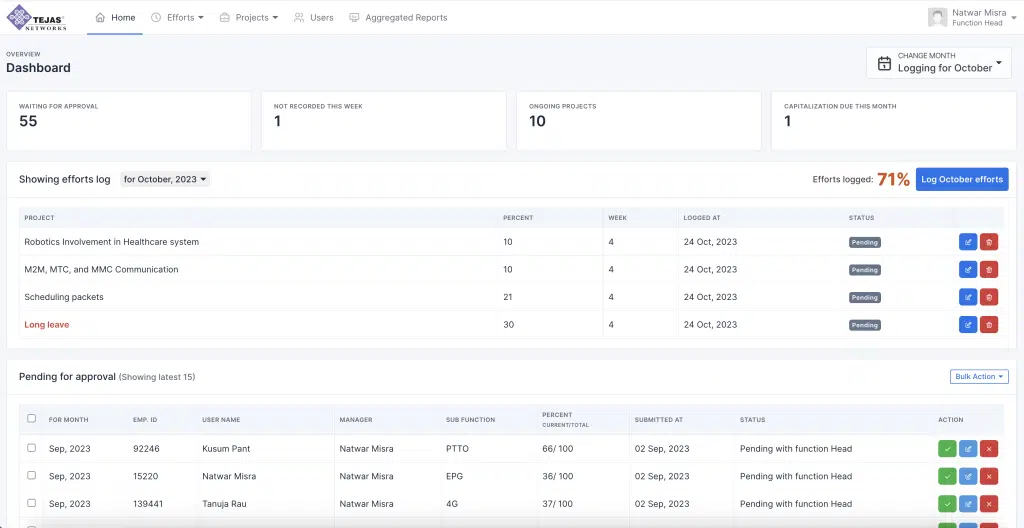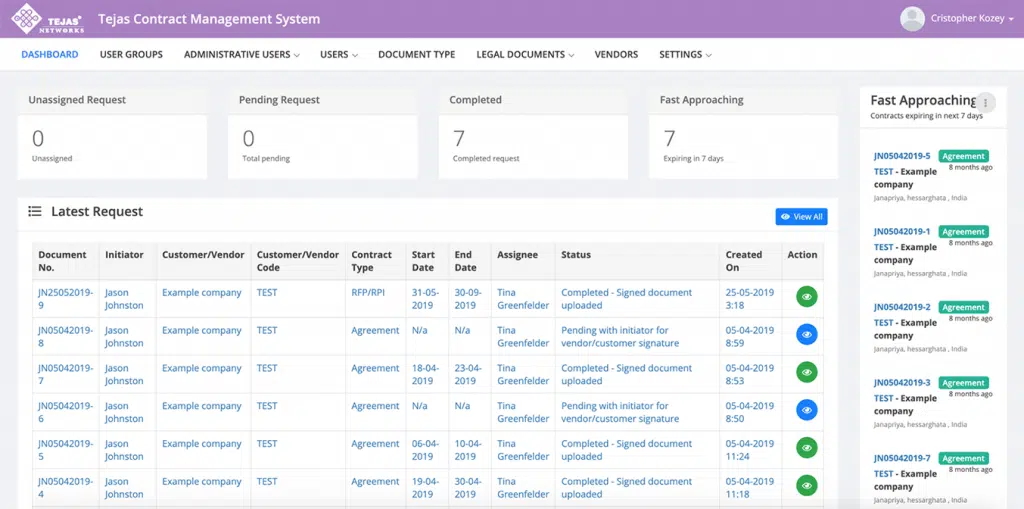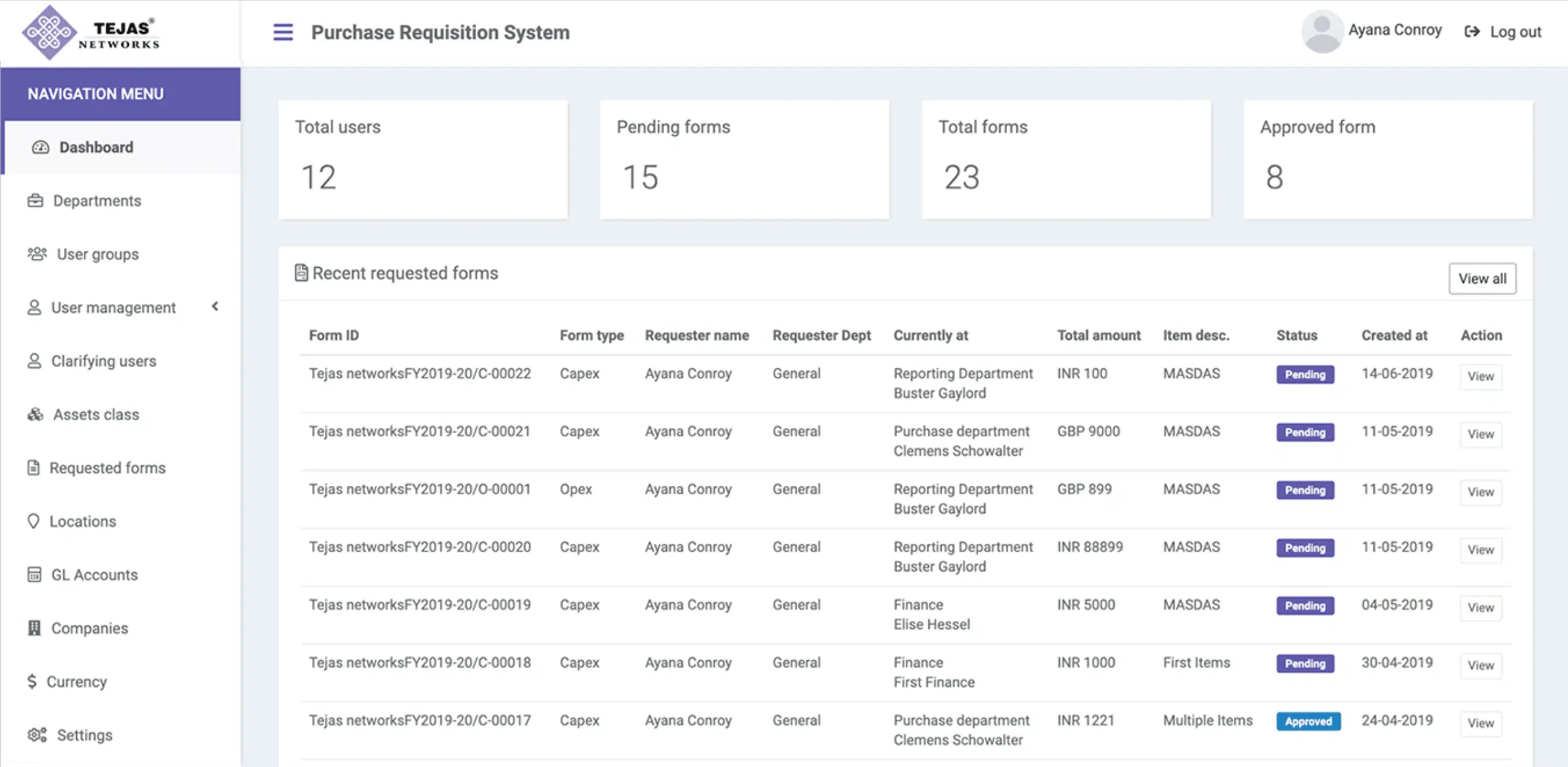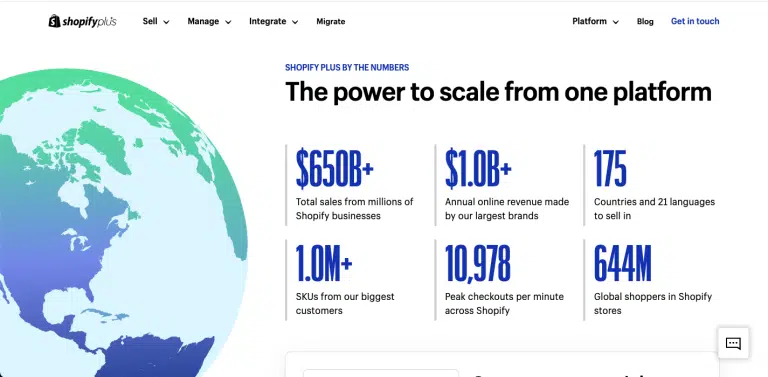In the continuously evolving terrain of the Digital Transformation age, businesses are navigating a profound shift in the way they operate. This era is characterised by a relentless pursuit of innovation, efficiency, and adaptability in response to ever-changing technological advancements. One notable facet of this transformative landscape is the burgeoning emergence of Artificial Intelligence (AI). AI, with its capacity for machine learning and intelligent automation, is revolutionising business processes, decision-making, and customer interactions. As organisations embrace AI-driven solutions, they are unlocking new levels of productivity, insights, and competitiveness, marking a significant milestone.
At the heart of this transformative journey lies the pivotal role played by Enterprise Applications. These sophisticated and integrated software solutions are the anchor of business evolution, offering a comprehensive framework to streamline operations, enhance collaboration, and elevate overall efficiency.
However, as businesses strive to embrace the future, many find themselves grappling with the challenges posed by what can be termed as “Excel chaos.” Despite its ubiquity, relying solely on spreadsheet software like Excel introduces limitations that impede workflow efficiency and compromise data accuracy. This introduces a pressing need for businesses to reassess their tools and methodologies to meet the demands of the modern business landscape. Next, we’ll dig into the details of managing Excel chaos, why change is necessary, and how Enterprise Applications can bring about transformative improvements.
Understanding the Excel Chaos
When it comes to company processes, relying solely on Excel can inadvertently lead to a chaotic situation known as “Excel chaos”.
Common Issues and Limitations of Relying Solely on Excel
- No Error Control: One of the main drawbacks of relying solely on Excel is its lack of error control. The absence of built-in validation checks and automated error detection mechanisms makes it susceptible to human errors, leading to inaccurate data and potential misinterpretation of results.
- Little Reusability: Excel’s limited reusability is another significant limitation. It lacks a reliable mechanism to collect data from multiple sources, making it cumbersome to integrate data from different systems or databases seamlessly.
- Problematic Scalability: Excel struggles with scalability when dealing with large amounts of data. It is known to be slow and inefficient in handling extensive datasets, resulting in performance issues and delays in data processing and analysis.
- Low Coverage of Data Operations: Excel’s functionality is primarily focused on basic data management and analysis tasks. It has limited coverage of more advanced data operations and complex analytical tasks, making it less suitable for in-depth data analysis and reporting.
- Lack of Automation: Excel is not designed for extensive automation, making it time-consuming to perform repetitive tasks. Manual data entry, formatting, and analysis can lead to increased human errors and reduced efficiency.
- Not Open: Excel’s closed ecosystem restricts seamless integration with other software and tools. This limitation can hinder collaboration, data sharing, and interoperability between different systems.
- Accountability: Excel’s tracking mechanisms are not sufficiently robust, posing challenges in establishing accountability for data modifications or updates. This limitation can result in difficulties in auditing and maintaining data accuracy. In a custom software solution, the primary stakeholder will have the capability to identify the user associated with a specific pending request and determine the duration it has been pending. This detailed information can be instrumental in identifying patterns and behaviours of both low-performing and high-performing members, providing insights that are not easily attainable within the Excel environment.
Impact on Workflow Efficiency and Data Accuracy
Relying solely on Excel can have a significant impact on workflow efficiency and data accuracy. The limitations mentioned above contribute to the following issues:
- Time-consuming Processes: Manual data entry, formatting, and analysis in Excel can consume a considerable amount of time, reducing productivity and slowing down decision-making processes.
- Increased Error Rates: Without robust error control mechanisms, Excel spreadsheets are prone to human errors, leading to inaccurate data and potentially flawed analysis.
- Limited Data Integration: Excel’s limited reusability and lack of automated data collection mechanisms make it challenging to integrate data from various sources, resulting in fragmented and incomplete datasets.
- Inefficient Collaboration: Excel’s closed ecosystem and lack of collaboration features can hinder teamwork and communication, leading to difficulties in sharing and consolidating data among team members.
Real-world Examples and Case Studies of Businesses Struggling with Excel Chaos
The limitations of relying solely on Excel have been highlighted in several real-world examples:
- COVID-19 Data Mishap: In October 2020, the UK government faced a data mishap when nearly 16,000 COVID-19 test results went missing due to Excel’s million-row limit. This incident shed light on the challenges of managing and analysing large datasets using Excel.
- Financial Modelling Errors: In 2012, JPMorgan Chase suffered a significant financial loss due to errors in Excel spreadsheets used for financial modelling. The incident emphasised the potential risks of relying solely on Excel for critical financial analysis and decision-making.
- Data Integrity Issues: Many businesses have encountered data integrity issues when relying solely on Excel. Duplicate entries, inconsistent formatting, and formula errors have led to incorrect data analysis, impacting business decisions and outcomes.
These real-world examples illustrate the importance of understanding the limitations of Excel and considering alternative tools and platforms for handling large datasets, ensuring data accuracy, and improving workflow efficiency.
Transitioning Beyond Excel: Recognizing the Necessity for Change

In today’s fast-paced business environment, relying solely on Excel for data management and analysis can present significant challenges. While Excel is a widely used tool and has its merits, it also has its limitations. As businesses grow and data volumes increase, Excel becomes less efficient and more prone to errors.
One of the main issues with Excel is its lack of scalability. As data sets become larger and more complex, Excel struggles to handle the volume and complexity effectively. This can result in slow performance, crashing, and data loss. Moreover, Excel’s formula-based calculations can be time-consuming and prone to human error, especially when dealing with large datasets.
Furthermore, Excel is not designed to provide advanced analytics and visualisation capabilities. While it can perform basic calculations and create simple charts, it falls short when it comes to more sophisticated analysis and visualisation techniques, especially for handling “multi-dimensional” datasets or statistics. Businesses today require powerful tools that can process and analyse vast amounts of data, generate meaningful insights, and present them in a visually appealing manner. This addition emphasises the need for tools capable of handling complex and multi-dimensional data structures, a requirement essential for modern businesses dealing with diverse and intricate datasets.
In the digital age, businesses need to be agile and make data-driven decisions to stay competitive. Excel’s limitations can hinder this agility and decision-making process, as it lacks the capabilities to integrate with other systems, automate processes, and provide real-time analytics. Businesses need tools that can provide a holistic view of their operations, enable seamless integration with other systems, and automate repetitive tasks to free up valuable time and resources.
To overcome these challenges, businesses need to embrace more sophisticated solutions that align with modern requirements. Cloud-based data management and analytics platforms, such as business intelligence tools and data visualisation software, offer scalability, collaboration, and advanced analytics capabilities that Excel lacks.
By transitioning to these more efficient solutions, businesses can streamline their processes, enhance collaboration, and improve decision-making. They can leverage powerful analytics tools to gain valuable insights from their data, identify trends and patterns, and make data-driven decisions with confidence. Moreover, these solutions enable real-time collaboration, allowing teams to work together seamlessly, regardless of their location.
Embracing Custom Software Solutions
In the quest to overcome the complexities of Excel chaos and align with the demands of the digital era, businesses are increasingly recognizing the potential of custom software solutions. This shift is driven by a fundamental need for a more sophisticated and tailored approach to digital operations. A key aspect of this transition involves a comprehensive understanding of the Integrated Software Spectrum.
Understanding the Integrated Software Spectrum: The first step in this journey is to gain insights into the diverse array of integrated software solutions, with a particular focus on Enterprise Applications and their pivotal roles. From Enterprise Resource Planning (ERP) systems that holistically manage business processes to Customer Relationship Management (CRM) platforms designed to enhance customer interactions, these solutions lay the foundation for creating a more cohesive and streamlined operational ecosystem. Recognizing the significance of this spectrum is fundamental to making informed decisions about the digital transformation journey.
Tailored Solutions for Enhanced Efficiency: Amidst the vast landscape of Enterprise Applications, businesses need to explore tailored solutions that specifically contribute to streamlining their unique processes. This section delves into categories such as ERP and CRM, providing valuable insights into their functionalities. Identifying the right applications tailored to the specific needs of a business is crucial for achieving operational efficiency. Whether seamlessly coordinating resources through ERP or strategically managing customer interactions via CRM, businesses can attain their overarching goal of streamlined processes, ultimately enhancing productivity and customer satisfaction.
Unlocking the Potential with Bespoke Software Development: While pre-packaged solutions exist, the true power lies in bespoke software development. Tailoring a solution to a business’s exact needs and nuances ensures unparalleled efficiency and effectiveness. This is where Madgeek, with its expertise in custom software development, emerges as a strategic partner. By understanding the intricacies of each business and crafting solutions that align seamlessly with their goals, Madgeek empowers businesses to navigate the digital landscape with confidence.
If your business is ready to harness the benefits of personalised software solutions and embark on a path to digital transformation, reaching out to Madgeek is the natural progression. Our dedication to providing creative and customised solutions guarantees that your business doesn’t just transition into the digital age but flourishes within it. Connect with Madgeek today to discover the potential of tailored software development and reshape your strategy for digital operations.
Implementing Change: Crucial Factors to Keep in Mind
Embarking on the transformative journey of implementing Enterprise Applications demands a strategic mindset, careful planning, and a touch of finesse to ensure a seamless transition. Here are key factors to keep in mind for a successful integration:
Assessing Business Requirements and Goals
Before diving into the implementation process, conduct a thorough assessment of your organisation’s unique needs and objectives. Dive into the intricacies of existing workflows, identify pain points, and envision future growth. Aligning the implementation with overarching business strategies ensures that the selected Enterprise Applications not only meet immediate needs but also pave the way for long-term success.
Choosing the Right Enterprise Applications for Your Business
Explore the vast array of solutions available with a keen eye on customization. This stage emphasises the importance of selecting applications that seamlessly align with your identified business requirements. Whether it’s industry-specific functionalities or scalability considerations, making informed decisions here lays the groundwork for sustained success. Tailor your choices to your organisation’s unique context for optimised efficiency.
Ensuring a Smooth Transition: Strategies and Best Practices
Smooth transitions don’t happen by chance. Implement effective change management strategies and comprehensive employee training programs. Take a holistic approach to minimise disruptions during this phase. Dive into best practices that facilitate seamless integration, ensuring the transformative journey isn’t just effective but is embraced enthusiastically throughout the entire organisation.
Cultivating User Engagement and Feedback
Engage your team early and often. Solicit feedback throughout the process to ensure that the chosen Enterprise Applications align with user expectations. This not only promotes a sense of ownership among employees but also helps in fine-tuning the implementation to suit day-to-day workflows better.
Scalability and Future-Proofing
Consider not just your current needs but also your future ambitions. Choose Enterprise Applications that are scalable and can evolve with your organisation. Future-proof your investment by selecting solutions that can adapt to the dynamic landscape of technology and business trends.
Data Security and Compliance
Prioritise data security. Ensure that the selected Enterprise Applications comply with industry regulations and standards. Implement robust security measures to protect sensitive information, fostering trust among both your team and clients.
By weaving these considerations into your implementation strategy, you’ll not only ensure a successful integration of Enterprise Applications but also set the stage for a dynamic, efficient, and future-ready organisation.
Overcoming Challenges
Embarking on the transition from familiar tools like Excel to sophisticated Enterprise Applications involves a nuanced understanding of the challenges inherent in such a transformative journey. Firstly, “Addressing Resistance to Change” underscores the multifaceted nature of the resistance employees may harbour toward embracing new technologies. This involves delving into the psychology of change, recognizing factors such as the comfort derived from familiarity and apprehensions about the learning curve associated with novel tools. Successful mitigation strategies include implementing clear and compelling communication, demonstrating the tangible benefits of the transition, and actively involving employees in decision-making processes to foster a sense of ownership and receptivity to the impending changes.
Moving on to “Managing Data Migration and Integration Challenges,” the complexity of transitioning from one system to another is explored in detail. This entails an examination of the intricate processes involved in ensuring the seamless transfer of data, a task fraught with potential pitfalls like loss or corruption. Strategies for efficient data migration and integration are discussed comprehensively, encompassing activities such as meticulous mapping out of data structures, rigorous testing procedures, and the establishment of robust protocols to proactively address potential challenges that may arise during the migration process.
Lastly, “Providing Adequate Training for Teams” delves into the critical aspect of preparing the workforce for the new technological landscape. Inadequate training can lead to inefficiencies, errors, and a slower adaptation to the new system. This section advocates for a holistic approach to training, encompassing tailored programs that consider the diverse skill levels within the workforce, the development of comprehensive user manuals, and the establishment of ongoing support mechanisms. This multifaceted training strategy is seen as an essential component to empower teams with the requisite skills and confidence needed to adeptly navigate and leverage the capabilities of the newly implemented Enterprise Applications. Through a meticulous exploration of these challenges, businesses can systematically address each facet, paving the way for a smoother and more successful transition, and ensuring that the benefits of the change permeate throughout the entire organisation.
Case Studies and Success Stories
Madgeek’s case studies demonstrate how customized software drives significant transformations across various business sectors:
- In legal contract management, bespoke software streamlines workflows expedites contract lifecycles, centralizes document management, and improves transparency.
- The purchase requisition software showcases how tailored software optimizes procurement workflows, reducing errors, speeding up approvals, and creating a cost-efficient ecosystem.
- The travel management software exemplifies how automation enhances travel processes, ensuring seamless itinerary planning and expense tracking for improved efficiency.
- The call center management software, developed by Madgeek, led to a remarkable growth from 50+ to 80+ agents in under three months. It introduced automation, audit trails, performance tracking tools, and analytics, streamlining operations and enabling swift scalability.
These case studies highlight how bespoke software automation enhances transparency and efficiency across legal, procurement, travel, and customer service domains. Explore more details in the case studies: Legal Contract Management, Purchase Requisition, Travel Management, and Call Center Management with Vicidial SSO Integration.
Conclusion
In the journey from Excel chaos to streamlined efficiency through the embrace of Enterprise Applications, businesses navigate challenges, recognize the limitations of Excel, and strategically implement transformative solutions. The transition involves assessing business needs, choosing the right applications, and ensuring a smooth integration. Overcoming challenges such as resistance to change, data migration complexities, and the need for comprehensive team training is crucial. As we reflect on this evolution, the call to action encourages businesses to continually embrace digital transformation, recognizing it as a long-term commitment for sustained success. This journey underscores the importance of adaptability in the face of technological advancements, positioning businesses to unlock their full potential and thrive in the dynamic digital landscape.


